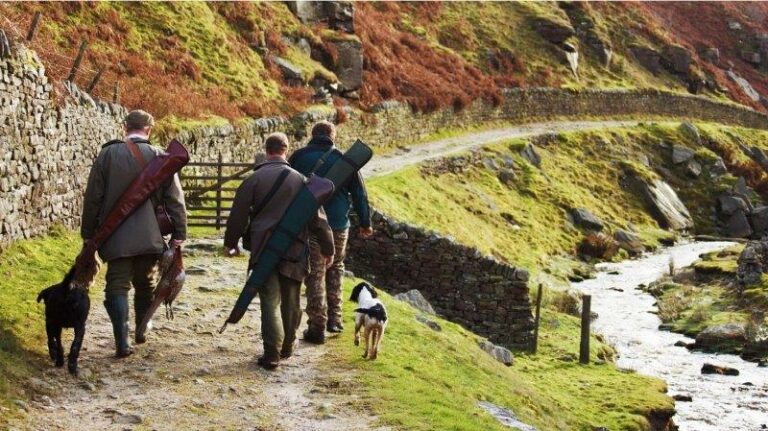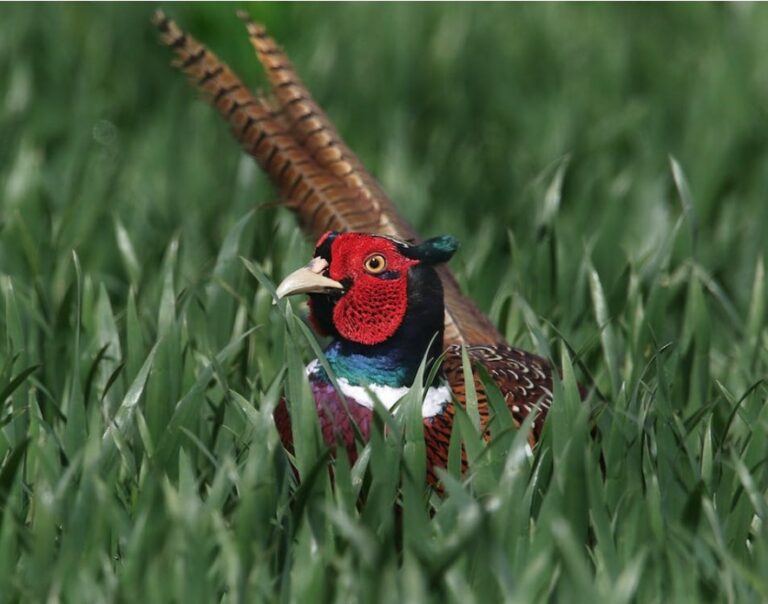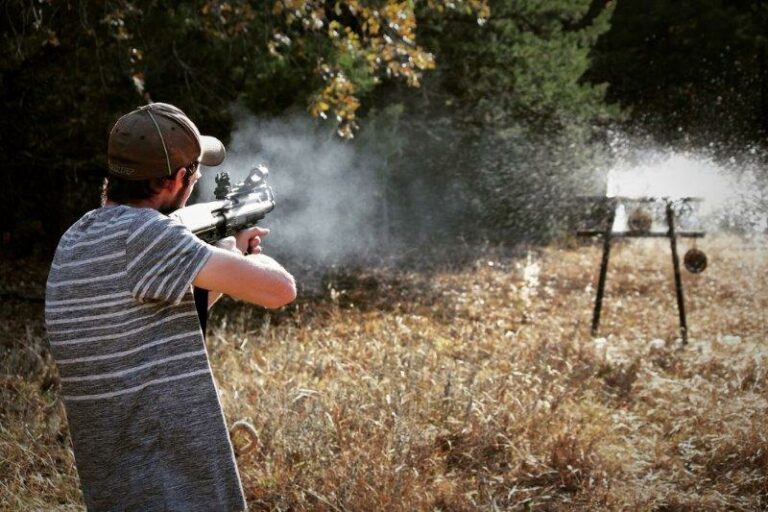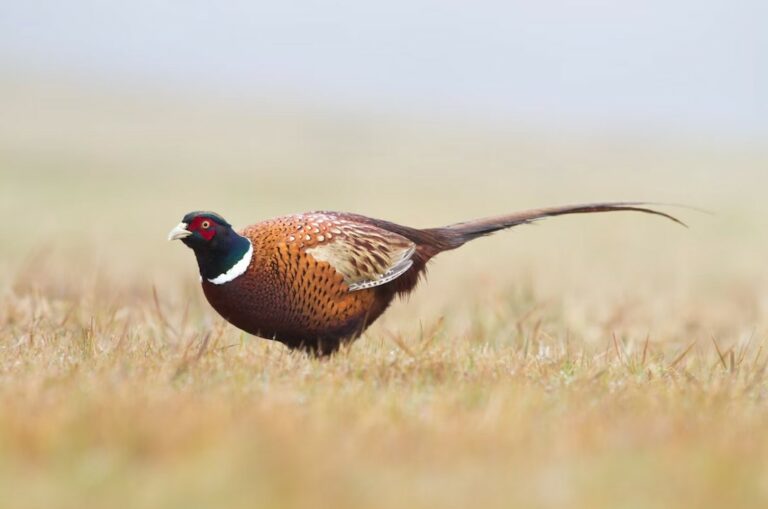It’s hunting season, and your friends have begun talking about their recent hunting trips. Yeah, I’m excited too.
Pheasants are commonly hunted throughout the US, and are now considered the most popular hunting game in America. It’s a popular form of hunting thanks to the strategy, teamwork, and camaraderie it brings.
If this sounds like something you and your friends would enjoy, I highly recommend giving it a shot!
Pheasant hunters must be well-rounded in terms of their skills. Though pheasant hunting is popular, that doesn’t mean it’s easy.
Reading terrain, understanding bird behavior, and having knowledge of their habits and habitats is important. It requires patience and practice to prepare you for the hunt.
In this blog post, I’m going to walk you through some helpful pheasant hunting tips. These tips can be super helpful whether you’re an expert or a beginner at hunting.
Quick Navigation
TogglePheasant Hunting 101
Pheasant hunting is the sport of hunting game birds, such as the ring-necked pheasant. It is either used for sport or for harvesting its feathers. The most popular method used to hunt pheasants is to locate roosting birds in the evening.
Then, go to the roost and flush the birds out of the trees where they have been roosting. This can be done by walking through the fields where they are roosting.
You could use trained flushing dogs by keeping them within shooting range. When it finds the bird, it should give you a signal, then you can fire your weapon. These dogs are also called, pointing dogs, since they help point you in the right direction.

Another way to hunt pheasants is to locate areas where they feed, set up nearby, and wait for them to come by. This can be done with feeder fields, where you put out feed to attract pheasants.
It can also be done with food plots, where you plant food that pheasants like to feed on, like corn, rye grass, or clover.
Pheasant Hunting Equipment You’ll Need
- A suitable shotgun
You’ll be hunting with a shotgun, and there are a few things to consider when choosing one. Pheasants are large birds and need a large amount of lead, so choose a shotgun that shoots a large shot, like No. 6 or larger shot.
For a small game, you’ll want a shotgun with a smaller gauge, like a 20-gauge.
- A shooting vest
A shooting vest is essential for pheasant hunting. It holds your shotgun shells and keeps them close to your body where they won’t get in the way.
Also, you’ll have easy access to your shells if you need to reload your shotgun during the hunt.
- Shooting gloves
Shooting gloves can protect your hands from injury if you accidentally fire your shotgun. Hunting can be rough on the hands, so you’ll want a pair of gloves to protect them from briars, thorns, and cuts.
- Hunting boots
A pair of good hunting boots will keep you comfortable while traversing through the wild terrain and keep your feet dry, in addition to providing good traction. The ankle support and tough outer material will help to retain heat and prevent you from getting hurt.
How to Find Pheasants
Knowing how and where to find pheasants will give you more time to set up traps and plan your strategy. Pheasants will roost in areas where there is dense cover, so try to find these areas to begin your search.
Additionally, you can try baiting pheasants with corn, wheat, or rye. They can also be lured by distress calls, which can be made with a squeaker call or a distress call.
You can also try to find pheasants by locating their nests. If you find a nest, you might be able to wait for the female pheasant to come back with food. You’ll have more success if you don’t spook them by running after them or stomping through the brush. Quiet, careful movements are best.

Are Pheasants hard to shoot?
In the uplands, pheasants are considered to be the easiest birds to hunt. This is because they are much larger than most upland birds. Also, their movements are fairly predictable and can be easily calculated.
It is sometimes difficult to hunt pheasants on days when you can barely spot them. As a result of this, the timing and area you are hunting at is crucial for a successful hunt.
You’ll also need to do your best to corner pheasants, by blocking their escape routes. If they have no way to escape, this makes them easier to target.
Best Destinations for Pheasant Hunting
Below we’ve compiled a list of some of the best places to go pheasant hunting. There are several to choose from, depending on your preferences and proximity.
- Arizona
- Alaska
- Colorado
- Idaho
- Iowa
- Kansas
- Minnesota
- Montana
- Nebraska
- North Dakota
Other strategies to find pheasants
Scouting
Scout the areas where you plan on hunting to see where pheasants are hanging out and where they like to feed.
Pheasants like to feed in open areas like fields and pastures. They also like to roost in areas with heavy cover, like cattails, brush, and shrubs.
Once you’ve scouted the areas where they like to be, you can come back during the hunting season with a plan of attack.
Hunting with Dogs
Pheasants are flighty and easily startled, so using dogs to flush them out can give you an edge. But, you should only use dogs after you’ve found pheasants by yourself. Dogs can be useful in finding pheasants. They can travel through cover that you can’t, like cattails or dense shrubs.
Tips for Successful Pheasant Hunting

Preparation and patience
Before you head out on the hunt, make sure you have everything you need to be successful. You should have the right equipment, such as a hunting backpack, know where pheasants like to be, and have a plan of attack.
Pheasant hunting takes time and patience. These birds don’t just fly into your gun—you have to stalk them and wait for the perfect moment to fire. Pheasants are skittish birds, so you’ll have to be careful when stalking them so you don’t scare them away.
You’ll need to be stealthy
Pheasants are easily startled, so you’ll want to be as quiet and stealthy as possible when hunting them.
There are many factors that can affect your hunt, like weather, time of day, and the area where you’re hunting. So you need to be observant of all these factors and their potential effects.
Practice your shot
Hunting birds is different from hunting larger prey because of their size. This creates a smaller target for you. If you’re not an expert at shooting, then practicing could do you good. Over time, your skills will improve, and you’ll start hitting more birds with each shot. For ethical reasons, try your best to take a clean shot so that the pheasant will die instantly and not have to struggle and have a prolonged suffering.
Find out which way the wind is blowing
Wind plays a role in pheasant hunting, especially when it comes to actually shooting the bird.
Depending on which direction the wind is blowing, you may need to aim slightly above or below the bird. This is so that it doesn’t fly into the wind and out of range before you have a chance to shoot it.
Safety is important!
When you’re pheasant hunting, you need to always remember to be safe. If you’re using a rifle, make sure to use the correct firearm, and use eye and ear protection.
While you are hunting pheasants, make sure you avoid aiming for something beyond it, or a fellow hunter in close proximity.
Birds are a small target, so you do need to be very careful. Always make sure to keep your gun muzzle pointed upwards. When you’re not using your firearms, they should be unloaded. Lastly, do not alter your rifle and make sure it’s regularly serviced and fully functional.

Conclusion
Finally, remember that pheasant hunting is a sport that takes time and patience. You’ll want to plan ahead, prepare, and know your surroundings before you head out on the hunt. Pheasant hunting can be hard, especially at first. But keep practicing, and you’ll improve over time.


